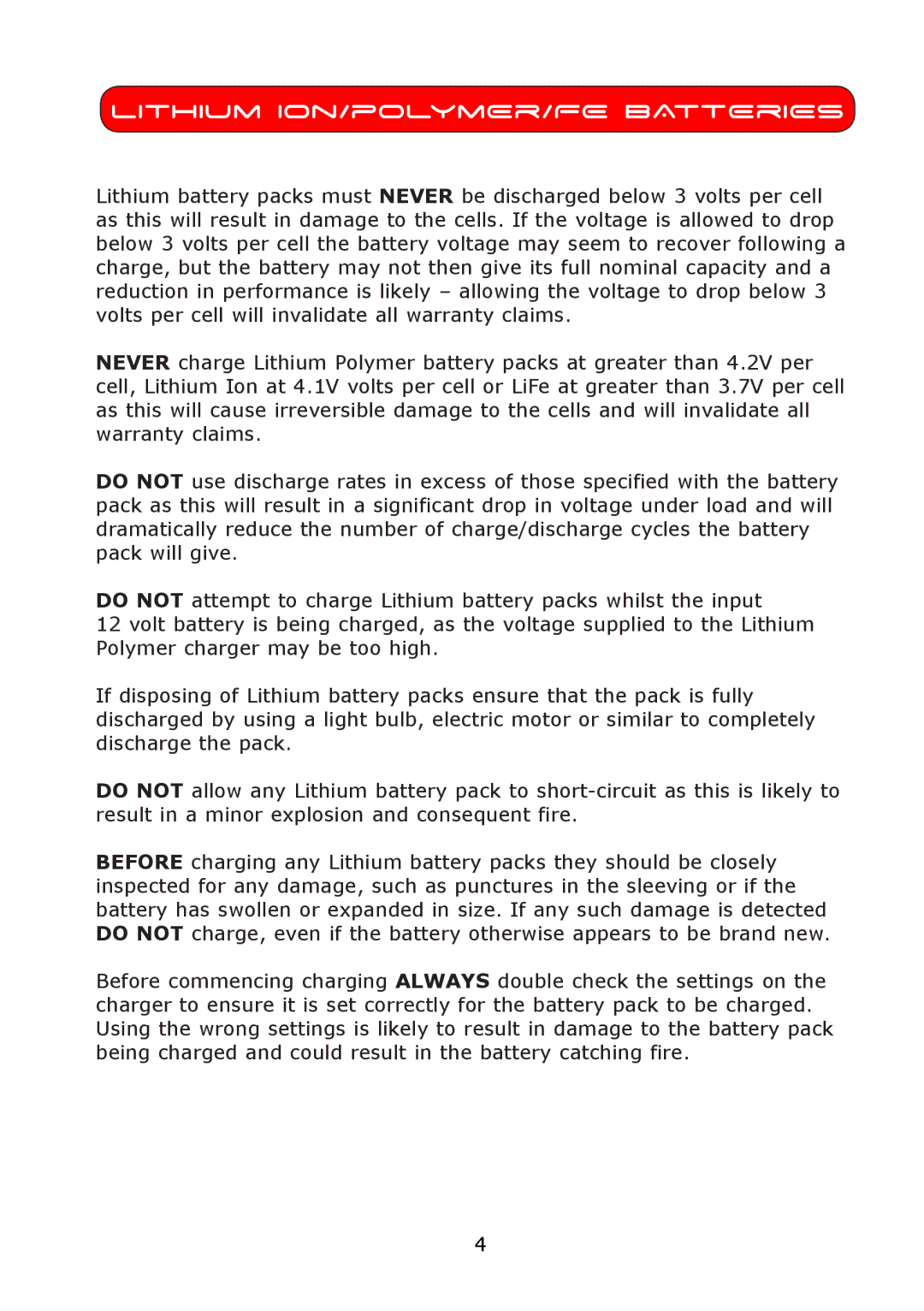LITHIUM ION/POLYMER/FE BATTERIES
Lithium battery packs must NEVER be discharged below 3 volts per cell as this will result in damage to the cells. If the voltage is allowed to drop below 3 volts per cell the battery voltage may seem to recover following a charge, but the battery may not then give its full nominal capacity and a reduction in performance is likely – allowing the voltage to drop below 3 volts per cell will invalidate all warranty claims.
NEVER charge Lithium Polymer battery packs at greater than 4.2V per cell, Lithium Ion at 4.1V volts per cell or LiFe at greater than 3.7V per cell as this will cause irreversible damage to the cells and will invalidate all warranty claims.
DO NOT use discharge rates in excess of those specified with the battery pack as this will result in a significant drop in voltage under load and will dramatically reduce the number of charge/discharge cycles the battery pack will give.
DO NOT attempt to charge Lithium battery packs whilst the input
12 volt battery is being charged, as the voltage supplied to the Lithium Polymer charger may be too high.
If disposing of Lithium battery packs ensure that the pack is fully discharged by using a light bulb, electric motor or similar to completely discharge the pack.
DO NOT allow any Lithium battery pack to
BEFORE charging any Lithium battery packs they should be closely inspected for any damage, such as punctures in the sleeving or if the battery has swollen or expanded in size. If any such damage is detected DO NOT charge, even if the battery otherwise appears to be brand new.
Before commencing charging ALWAYS double check the settings on the charger to ensure it is set correctly for the battery pack to be charged. Using the wrong settings is likely to result in damage to the battery pack being charged and could result in the battery catching fire.
4
